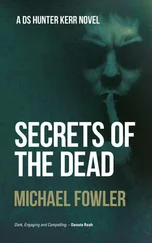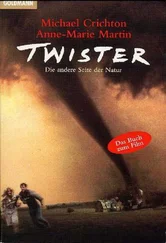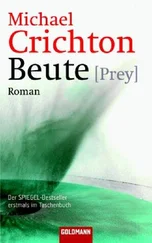Michael Crichton - Eaters of the Dead
Здесь есть возможность читать онлайн «Michael Crichton - Eaters of the Dead» весь текст электронной книги совершенно бесплатно (целиком полную версию без сокращений). В некоторых случаях можно слушать аудио, скачать через торрент в формате fb2 и присутствует краткое содержание. Жанр: Детская проза, на английском языке. Описание произведения, (предисловие) а так же отзывы посетителей доступны на портале библиотеки ЛибКат.
- Название:Eaters of the Dead
- Автор:
- Жанр:
- Год:неизвестен
- ISBN:нет данных
- Рейтинг книги:4 / 5. Голосов: 1
-
Избранное:Добавить в избранное
- Отзывы:
-
Ваша оценка:
- 80
- 1
- 2
- 3
- 4
- 5
Eaters of the Dead: краткое содержание, описание и аннотация
Предлагаем к чтению аннотацию, описание, краткое содержание или предисловие (зависит от того, что написал сам автор книги «Eaters of the Dead»). Если вы не нашли необходимую информацию о книге — напишите в комментариях, мы постараемся отыскать её.
Eaters of the Dead — читать онлайн бесплатно полную книгу (весь текст) целиком
Ниже представлен текст книги, разбитый по страницам. Система сохранения места последней прочитанной страницы, позволяет с удобством читать онлайн бесплатно книгу «Eaters of the Dead», без необходимости каждый раз заново искать на чём Вы остановились. Поставьте закладку, и сможете в любой момент перейти на страницу, на которой закончили чтение.
Интервал:
Закладка:
[15]Literally, “a two-handed man.” As will be clear later, the Northmen were ambidextrous in fighting, and to shift weapons from one hand to another was considered an admirable trick. Thus a two-handed man is cunning. A related meaning was once attached to the word “shifty,” which now means deceitful and evasive, but formerly had a more positive sense of “resourceful, full of maneuvers.”
[16]This account of what is obviously a sighting of whales is disputed by many scholars. It appears in the manuscript of Razi as it is here, but in Sjogren’s translation it is much briefer, and in it the Northmen are shown as playing an elaborate joke upon the Arab. The Northmen knew about whales and distinguished them from sea monsters, according to Sjogren. Other scholars, including Hassan, doubt that Ibn Fadlan could be unaware of the existence of whales, as he appears to be here.
[17]Popular representations of the Scandinavians always show them wearing helmets with horns. This is an anachronism; at the time of Ibn Fadlan’s visit, such helmets had not been worn for more than a thousand years, since the Early Bronze Age.
[18]The described figurine corresponds closely to several carvings discovered by archaeologists in France and Austria.
[19] Ducere spiritu : literally, “to inhale.”
[20]This is not the same “angel of death” who was with the Northmen on the banks of the Volga. Apparently each tribe had an old woman who performed shamanistic functions and was referred to as “the angel of death.” It is thus a generic term.
[21]The Scandinavians were apparently more impressed by the stealth and viciousness of the creatures than the fact of their cannibalism. Jensen suggests that cannibalism might be abhorrent to the Norsemen because it made entry into Valhalla more difficult; there is no evidence for this view.
However, for Ibn Fadlan, with his extensive erudition, the notion of cannibalism may have implied some difficulties in the afterlife. The Eater of the Dead is a well-known creature of Egyptian mythology, a fearsome beast with the head of a crocodile, the trunk of a lion, and the back of a hippopotamus. This Eater of the Dead devours the wicked after their Judgment.
It is worth remembering that for most of man’s history, ritual cannibalism, in one form or another, for one reason or another, was neither rare nor remarkable. Peking man and Neanderthal man were both apparently cannibals; so were, at various times, the Scythians, the Chinese, the Irish, the Peruvians, the Mayoruna, the Jagas, the Egyptians, the Australian aborigines, the Maoris, the Greeks, the Hurons, the Iroquois, the Pawnees, and the Ashanti.
During the time Ibn Fadlan was in Scandinavia, other Arab traders were in China, where they recorded that human flesh-referred to as “two-legged mutton”-was openly and legally sold in markets.
Martinson suggests that the Northmen found the wendol cannibalism repellent because they believed that the flesh of warriors was fed to women, particularly the mother of the wendol. There is no evidence for this view, either, but it would certainly make a Norse warrior’s death more shameful.
[22]An Arab would be especially inclined to think so, for Islamic religious art tends to be nonrepresentational, and in quality similar to much Scandinavian art, which often seems to favor pure design. However, the Norsemen had no injunction against representing gods, and often did so.
[23](…): literally, “veins.” The Arabic phrase has led to some scholarly errors; E. D. Graham has written, for example, that “the Vikings foretold the future by a ritual of cutting the veins of animals and spreading them on the ground.” This is almost certainty wrong; the Arabic phrase for cleaning an animal is “cutting the veins,” and Ibn Fadlan was here referring to the widespread practice of divination by examination of entrails. Linguists, who deal with such vernacular phrases all the time, are fond of discrepancies in meaning; a favorite example of Halstead’s is the English warning “Look out!” which usually means that one should do exactly the opposite and dive for cover.
[24]Circumcision.
[25]Ibn Fadlan does not describe a basilisk, apparently assuming that his readers are familiar with the mythological creature, which appears in the early beliefs of nearly all Western cultures. Also known as a cockatrice, the basilisk is generally a variety of cock with a serpent’s tail and eight legs, and sometimes bearing scales instead of feathers. What is always true of the basilisk is that his stare is deadly, like the stare of a Gorgon; and the venom of the basilisk is particularly lethal. According to some accounts, a person who stabs a basilisk will watch the venom travel up the sword and onto his hand. The man will then be obliged to cut off his own hand to save his body.
It is probably this sense of the danger of the basilisk that prompts its mention here. The old noble is telling Ibn Fadlan that a direct confrontation with the troublemakers will not solve the problem. Interestingly, one way to dispatch a basilisk was to let it see its reflected image in a mirror; it would then be killed by its own stare.
[26](…) in Arabic, and in the Latin texts, verbera . Both words meaning “flogging” or “whipping,” and not “flinging,” as this passage is ordinarily translated. It is usually assumed that Ibn Fadlan used the metaphor of “whipping” with dirt to emphasize the ferocity of the insult, which is clear enough in any case. However, he may have consciously or unconsciously transmitted a distinctly Scandinavian attitude toward insults.
Another Arab reporter, al-Tartushi, visited the town of Hedeby in A.D. 950, and said this about the Scandinavians: “They are most peculiar in the matter of punishment. They have only three penalties for wrongdoing. The first of these and the most feared is banishment from the tribe. The second is to be sold into slavery and the third is death. Women who do wrong are sold as slaves. Men always prefer death. Flogging is unknown to the Northmen.”
This view is not precisely shared by Adam of Bremen, a German ecclesiastical historian, who wrote in 1075: “If women have been found unchaste, they are sold off at once, but if men are found guilty of treason or any other crime, they prefer to be beheaded than flogged. No form of punishment other than the axe or slavery is known to them.”
The historian Sjogren places great importance on Adam’s statement that men would prefer to be beheaded rather than flogged. This would seem to suggest that flogging was known among the Northmen; and he argues further that it was most likely a punishment for slaves. “Slaves are property, and it is economically unwise to kill them for minor offenses; surely whipping was an accepted form of punishment to a slave. Thus it may be that warriors viewed whipping as a degraded penalty because it was reserved for slaves.” Sjogren also argues that “all we know of Viking life points to a society founded upon the idea of shame, not guilt, as the negative behavioral pole. Vikings never felt guilt about anything, but they defended their honor fiercely, and would avoid a shameful act at any cost. Passively submitting to the whip must have been adjudged shameful in the extreme, and far worse than death itself.”
These speculations carry us back to Ibn Fadlan’s manuscript, and his choice of the words “whipping with dirt.” Since the Arab is so fastidious, one might wonder whether his words reflect an Islamic attitude. In this regard, we should remember that while Ibn Fadlan’s world was certainly divided into clean and dirty things and acts, soil itself was not necessarily dirty. On the contrary, tayammum , ablution with dust or sand, is carried out whenever ablution with water is not possible. Thus Ibn Fadlan had no particular abhorrence of soil on one’s person; he would have been much more upset if he were asked to drink from a gold cup, which was strictly forbidden.
Читать дальшеИнтервал:
Закладка:
Похожие книги на «Eaters of the Dead»
Представляем Вашему вниманию похожие книги на «Eaters of the Dead» списком для выбора. Мы отобрали схожую по названию и смыслу литературу в надежде предоставить читателям больше вариантов отыскать новые, интересные, ещё непрочитанные произведения.
Обсуждение, отзывы о книге «Eaters of the Dead» и просто собственные мнения читателей. Оставьте ваши комментарии, напишите, что Вы думаете о произведении, его смысле или главных героях. Укажите что конкретно понравилось, а что нет, и почему Вы так считаете.









